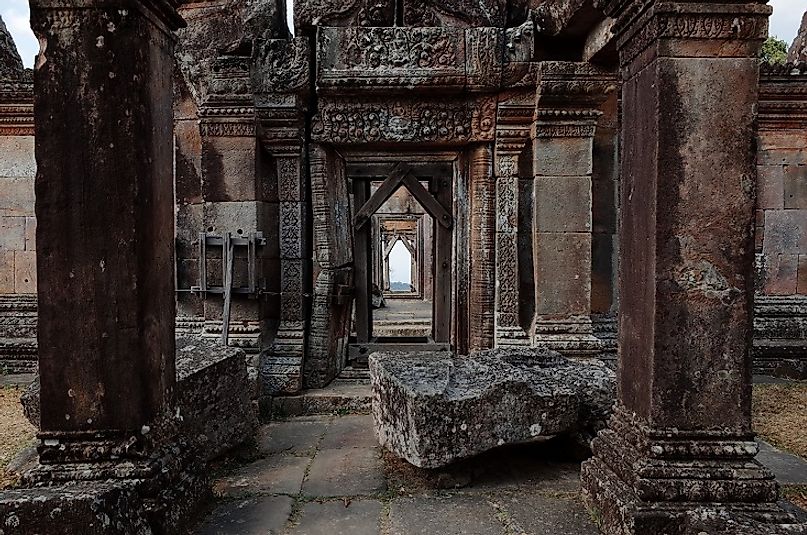Preah Vihear Temple, Cambodia

5. Description and History -
The Preah Vihear Temple is located in the Dangrek Mountain range, which forms the border between Thailand and Cambodia. Because of its location, Cambodia and Thailand disputed ownership until 1962, when the International Court of Justice ruled that it belonged to Cambodia. This Hindu temple was built during the Khmer Empire, beginning in the 9th Century. It was dedicated to the Hindu god Shiva. Construction continued over the following centuries, however, the majority was built during two eras. These were under King Suryavarman I from 1006 until 1050, and under King Suryavarman II from 1113 through 1150.
4. Tourism -
Despite ownership belonging to Cambodia, until 2003 visitors could only reach the temple by coming from Thailand. It was closed from 1975 to 1998 due to occupation by the Khmer Rouge, the ruling Communist party in Cambodia. In 2014, the Thai entrance was closed. Visitors are able to reach the temple by taking a combination of buses and motor taxis to the foot of the temple. Once at the bottom of the hill, the first site to tackle is a stone staircase with 162 steps which leads to 3 different pavilions called gopuras. After visiting these, tourists find the first courtyard. Walking around the temple leads to galleries, the main sanctuary, a stream, and a three-tiered waterfall. On the way up, tourists can also buy some souvenirs from vendors selling t-shirts, postcards, cognac, and cigarettes. Thailand and Cambodia have continued disputes over the area. Some of these disputes have been violent, including those in 2008, 2009, and 2011.
3. Uniqueness -
What will strike one as being most unique when seeing the Preah Vihear Temple is its orientation. Most Khmer temples were built in a rectangular plan, facing the east. The Preah Vihear, however, is on a long, 2,600-foot, north-south axis. The temple became a UNESCO World Heritage Site in 2008. Its proposed inscription was agreed upon by both Thailand and Cambodia, and the two countries decided that it should be Cambodia that should apply for the recognition. They both declared the site to be of “Outstanding Universal Value”. However, Thailand withdrew its support after concerns that the map of the area could include disputed area near the temple. The site was rewarded with this distinction for its well-preserved Khmer architecture and religious function. Additionally, its carved stone decorations have been cited as being of extreme quality.
2. Natural Surroundings, Sights, and Sounds -
The temple is surrounded by the Dangrek mountains, a low elevation mountain range. The mountains are covered with dry evergreen and deciduous dipterocarp forests. Some of the wildlife in the area includes wild hogs, barking deer, gibons, civets, and the threatened white-winged duck.
1. Threats and Conservation -
The area surrounding the temple is under several threats. The first of these is deforestation from illegal logging endeavors. This practice threatens both the animals in the region and the plant species, particularly the threatened Thailand Rosewood tree. The area also experiences illegal elephant hunting. The ongoing ownership disputes have resulted in significant damage to the region surrounding the temple. Undetonated landmines continue to exist hidden near the surface of several areas within the mountains. Military fighting has also caused damage to some of the stone carvings and temple walls. Conservation of this beautiful site requires international effort. Some scholars have suggested that perhaps the area be protected as a shared-border Protected Landscape-Anthropological Reserve (IUCN Category V). This conservation status would give both governments equal responsibility in its preservation and hopefully terminate military action in the area.











